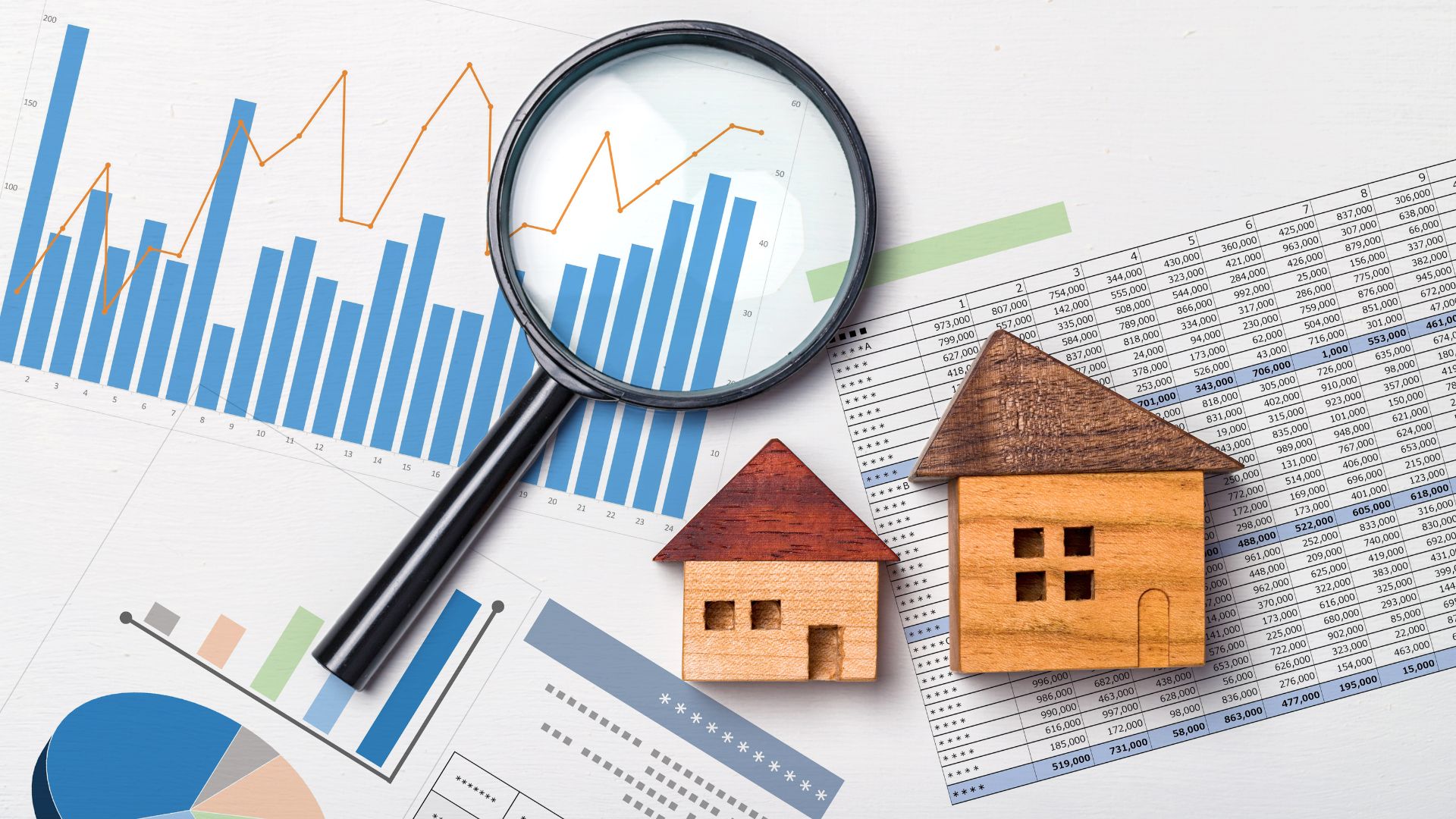Over the last 60 days, we’re experiencing something that hasn’t happened in a really long time–interest rates have started to move up as the Fed is doing everything they can to battle inflation. With consistent rate hikes expected (starting next week) over the coming 18 months, a war in Ukraine and supply chain issues plus inflation, this is no doubt a time of economic uncertainty–particularly in the real estate business where interest rates affect pricing, borrowing power, cap rates, etc.
Much like we did at the onset of the Coronavirus Pandemic, we are spending a lot of time talking with folks to get as many opinions as we can. We’re listening. We’re reading, and attending conferences. Trying to get the opinions from qualified “experts”, industry leaders, economists and anyone else who will take our call.
The consensus in the marketplace really only seems to agree on two things. First, that interest rates are certainly going to go up in the very near term. And second, that we’re in a time of change. From there, you’ll see a wide array of opinions. Some folks think the rates will continue to rise for the next 24 months and we’ll be operating in a “new normal” environment, while others predict the economy will choke on higher rates and fall into recession– and rates will fall again to keep things moving. There is conversation about the price of oil and natural gas, and the impact of Russian embargos will have. The amount of cash still in the system globally, the reliance on the US Dollar, and amount of Developing Nations’ debt that will be at risk of default, etc, etc.
In the face of this change and potential uncertainty, we wanted to share our thoughts with partners and investors as we continue to run our business and execute our plans.
Acquisition Environment: The capital markets have already responded to anticipated rate hikes and upcoming changes, and have responded by widening out spreads or completely pausing on new loans/business until things settle down some. With fewer lenders participating and a higher cost of capital, this is impacting the way that we (and other operators) underwrite and look at deals. Simply stated, it’s nearly impossible to offer the same price that could have been offered several months ago, simply due to higher interest rates.
We continue to stay active in the market and underwrite and tour every deal. It’s part of our charge and mission–to have the best market data of anyone playing in the Austin and San Antonio multifamily markets. The best way to have the best data is to participate in live processes. What we’re seeing in the last month is that there are a smaller number of bidders pursuing each deal. Similar to the lending market, some institutional groups have just put their pencils down. Brokers are working hard to round up qualified offers close to the prices they had hoped for.
We’re not seeing the sky falling–far from it–especially here in Central Texas. But we are seeing a slight move back to a more balanced market rather than living in a strictly seller’s market.
What remains to be seen on this front is Cap Rates. Will Cap Rates rise ever so slightly as interest rates go up? Will seller’s adjust their expectations, or choose to wait and sell? So far, they haven’t moved much–and remain firmly near 3.0%. But we’ll be watching closely.
Fundamentals of Central Texas Have Not Changed: Recessions are a reality of the economy. Traditionally the economy has experienced a recession every 7 to 10 years. More applicable to today’s news, the economy has recessed on average 18 months following the type of rate hikes that we are looking at in May. That being said, the way market’s react to recessions is of particular concern or importance to us. In the last meaningful recession (2008-2010), Austin was the last market in the country to have negative job growth, the first economy to return to positive job growth, and the first economy in the country to reach its pre-recession numbers. Since that time, Austin’s economy has become more diverse while its advantages over high tax jurisdictions in California, New York and Illinois have only grown. For this reason, in-migration to Austin appears to be picking up steam. Ultimately people follow jobs and no market in the county continues to add jobs at a faster pace than Austin, Texas. That was true before this unpredictable time, and it will remain true as time progresses–perhaps even moreso. So will our warm weather and low tax environment. Coming out of the Pandemic, we saw Austin’s population growth and job announcements both set records nationally; there was a flight to safety and security that would likely continue. In recessionary times, we believe Austin’s economy will grab greater market share from companies that are looking to relocate or expand.
Being in an industry that relies on, and studies, job and population growth–those two things haven’t changed, nor are they predicted to slow down during a recession. People will always need a place to live, and they are choosing to live in Central Texas in record numbers.
Operational Strength Continues: As we continue to study and audit our current portfolio performance, we continue to be amazed at each assets’ performance. We’ll take as much credit as you’ll give us for that, but recognize much of it is market driven. And any economic uncertainty swirling around has not slowed our performance onsite. Our occupancy remains very strong, our lease-up assets are ahead of schedule and our lease trade out reports show 20%+ (and in some cases 50%+) growth numbers. That won’t last forever, but nothing is slowing down onsite.
On the flip side, rising rates could (and likely will) impact supply and new construction starts. Developers will grapple with the same interest rate environment and even more uncertainty about their projects, as construction costs and materials have exploded in pricing squeezing their returns. Fewer apartment starts, however small the number, will only further exacerbate the supply issues we see–which is contributing to these astounding rent growth numbers.
Homeownership Attainability: Central Texas has a burgeoning affordability problem, that has specifically been talked about over the last year as housing prices have skyrocketed. Buyers coming in from out of state, and the increasing percentage of young but well-paid Tech employees have made it difficult for those of us living here already to buy a home. With the average price of a home in Austin now sitting near $500,000, there have been many folks forced to rent rather than buy.
As interest rates rise for the home buyer (in the same way they rise for us the apartment owner), we can all now afford less home than we could three month ago. Coupled with the fact the latest property tax assessments jumped values by over 50%–increasing the tax escrow each month–and a whole bunch of prospective homeowners will need to remain renters for the time being.
We’re not here to opine if that’s good for the general economy or not (saving that for a future conversation). But it does mean there will be additional renters looking for apartments, which isn’t bad for our business.
So where do we go? For all the above reasons we remain bullish about our market. And comfortable in our product type. The shelter business will continue to be a good (and safe) one to be in.
Let’s call us “cautiously optimistic”. The interest rate impact on our underwriting is real, and something we’ll continue to monitor and study. But the fundamentals remain. If other groups are going to pause and there is less competition on new deals, we want to be opportunistic. We’ll monitor pricing. We’ll continue to be conservative in our underwriting. We’ll set realistic expectations for our Investor Returns. And we’ll continue to focus on excellent locations that are desirable in any economic environment.
Finally, we will leave you with this. In the last two weeks we have seen a transaction of historic proportions. The most powerful businessman in America decided to purchase one of the largest companies in the world (possibly out of spite). That same person decided to move Tesla, his other companies and his family to Austin, Texas. We don’t know if Twitter will ultimately follow but Elon predicted that Austin will be a “modern day boomtown.” We are very lucky to be in and from Austin, Texas.

Andrew Campbell is a native Austinite and Managing Partner at Wildhorn. He is a real estate entrepreneur who first broke into the business in 2008 as a passive investor. In 2010 he transitioned into active investing and management of a personal portfolio that grew to 76 units across Austin and San Antonio. He earned his stripes building and managing his personal portfolio before founding Wildhorn Capital and focusing on larger multifamily buildings. At Wildhorn, he is focused on Acquisitions and maintaining Investor Relations, utilizing his marketing and communications background to build long-term relationships.







